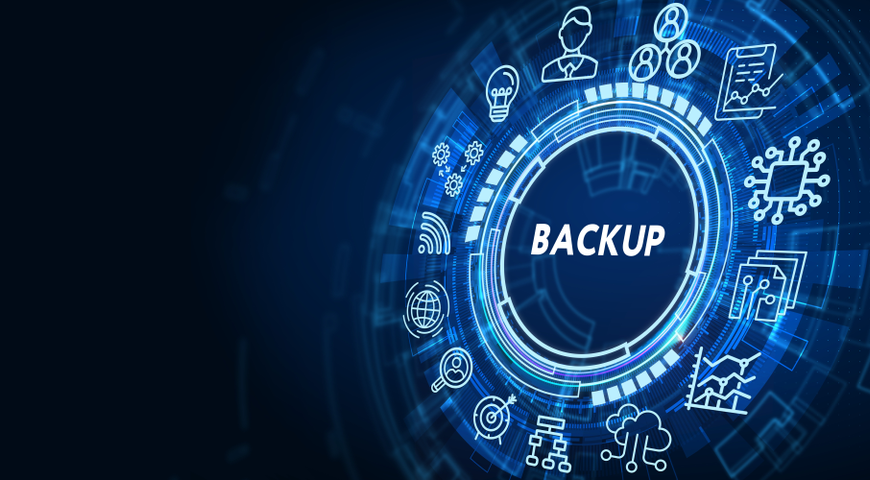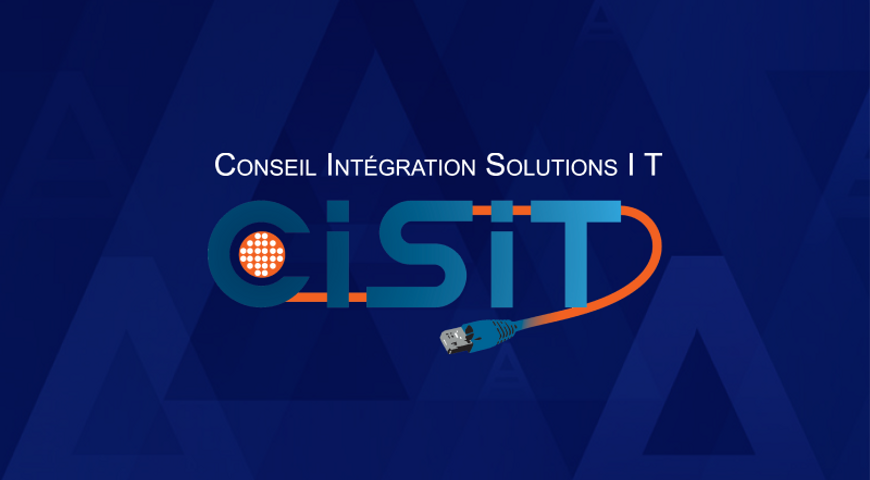
Backup and recovery is the process of creating a copy of our critical data, storing it in a secure place, and then restoring that data to its original location or a safe alternative in case of unexpected scenarios like hardware failure, accidental deletion, data corruption, cyberattacks, and natural disasters. If we face such a situation that, of course, would lead to data loss, which could be a heartbreaking experience. But if you have provided yourself already with a backup and recovery option, you will be able to recover all of your information in a blink of an eye. Thus, you will be able to proceed with your casual operations and tasks.
The backup and recovery process is essential for every business organization around the globe, because with this kind of service, you can guarantee the business continuity of your company no matter what happens. Organizations can rely on backup and recovery solutions, whether they are onsite or cloud-based, to automate and facilitate the protection and preservation of their data for business needs and regulatory requirements.
What is the difference between data backup and recovery?
The main contrast between backup and recovery lies in their functions. Backing up involves protecting and preserving your data, while recovery refers to making it able to be used when necessary.
On the other hand, recovery pertains to the action of retrieving and reinstating the backed-up data onto your systems to prevent any interruptions in operations. Having backups and swift recovery processes plays a critical role in maintaining business operations seamlessly and ensuring business stability.
What are the 3 main types of backup?
As we already understood, backup is a critical aspect for every business organization and becomes an integral part of providing business continuity processes. But there are three main types of backup options. What are these three types? We will now explore them in detail so you can become more familiar with every one of them and how they function. Are you ready? Let's get started.
Full backups
This type of backup ensures that all data from a server, database, virtual machine (VM), or connected data source is securely saved. Think of this backup type as creating a copy exactly the same as the original database, with the same size and the same amount of information. You are literally cloning your original database, creating a copy of all this information, and keeping it in a safe place for emergency situations. The time taken for these backups can vary from hours to days, depending on the volume of data being stored. An advanced data management system requires full backups and completes them faster when necessary.
Incremental backups
An incremental backup captures only new data since the last full incremental was performed. This gives more flexibility to business organizations in spinning these types of database backups as often as they want. Incremental backup requires space to store only the new data that was not uploaded with the full backup, which leads to a lightning-fast backup process.
Differential backups
The strategy of differential backups involves using a full backup as a reference point for subsequent backups. After completing the backup of primary data, differential backups identify new or modified data to be backed up. As more data is created or altered since the last full backup, it becomes eligible for inclusion in a differential backup. Companies can schedule when to perform these backups and consistently store backup data.
In a disaster recovery situation, restoring data only requires the full backup and the latest differential backup. However, regular differential backups consume more storage space compared to incremental backups; hence, organizations need to establish practical retention policies to manage storage effectively.
These three types of backups are related to each other and have an essential connection between them in order to protect us from lost data. Their purpose is to keep all of our information backed up in order to be able to retrieve data and execute the recovery process whenever we need it.
Why is Backup and Disaster Recovery important?
Data backup process can be named as a lifesaving option for every user and business organization. Why is that? Because our computers and mobile phones have become an essential part of our life, we are using them for all kind of everyday activities. Storing our sensitive data on them is really a blessing, because we can access this data whenever we want to, but what happens if we face some kind of unexpected scenarios?
There is a real risk that we may experience primary data failures and it could be caused by natural disasters, cyber attacks, hardware failure, data corruption, human error, and also lost or stolen devices. In such events data loss can be permanent, fortunately, today we are provided with backup solution and data protection services. If we are clever enough and already using data backup and recovery services we will be able to store our valuable data on a safe place and then to recover it whenever we need to restore data.
In this sense every user and business organization must have a robust and tested backup and disaster recovery plan for these unexpected scenarios. The probability to face one of the events we mentioned is quite fair enough, so we have to be prepared for such a moment. You must equip yourself with a comprehensive data backup and recovery plan to provide peace of mind knowing that your precious information will be protected and whatever happens you will be able to recover your information and keep your business running as usual. So it is up to you to ensure yourself with robust and reliable backup data recovery plan. Let's dive deeper in the world of the recovery plan strategy and explain the processes.
What exactly is a disaster recovery plan ?
A disaster recovery plan defines how quickly you can recover from an incident that unexpectedly affects the functionality of critical apps and data and makes them inaccessible. Having such a plan prepares you for restoring the functionality of your apps and systems and getting them back online quickly, so you can minimize the damage like data lost that would affect your business. Understanding a few essential terms can help shape your strategic decisions and enable you to better evaluate backup and disaster recovery solutions. This kind of plan includes two key purpose components, which are RTO and RPO.
RTO: Recovery Time Objective
RTO is the goal your business organization defines for the maximum period of time it should take to recover normal operations and functionalities after an outage or data loss event.
RPO: Recovery Point Objective
RPO is the goal your business organization defines for the maximum amount of information and data the organization can lose. This process is measured in time; it starts from the moment the failure happens to your last data center backup. Let's say, for instance, that if you go through a data center failure now and the last full backup was 12 hours ago, your RPO is 12 hours. This is how the time for RPO is measured.
Many organization owners know the pain of a downtime and how costly it could be. In the fast-paced world of business, customers now expect top-notch service. Any downtime in operations can lead to lost sales, decreased productivity, and a drop in customer satisfaction. This is why it's crucial for every company to have a disaster recovery strategy in place.
What is the difference between Cloud vs Onsite Backup and Disaster Recovery?
These two methods are incredibly helpful and real lifesaving options in the case of unexpected events, but they work differently. Wonder what is the difference? We will explain exactly what the difference is between them.
Cloud backup and disaster recovery
As the name suggests, it is based on cloud storage services. Using such a service will store your data on a cloud storage space (a remote location) and keep your information there. In case of need, you will be able to recover your precious information from the cloud. To execute such a backup, you will need a stable internet connection in order to complete the backup and recovery process. Cloud disaster recovery is a service that makes the user able to restore fundamental operations quickly and provides remote access to secure secondary infrastructure in the event of a disaster.
The advantages of using such a cloud backup and disaster recovery are that you will be provided with reliable and secure infrastructure, ensuring that you will always be able to recover your data whenever you need it. It is a fact that when using a cloud-based backup and recovery plan, you will have the following benefits:
Hardware independence: Even if your primary production hardware is not working properly due to failure, ransomware, a natural disaster, etc., you will be able to restore and continue operations with cloud disaster recovery tools. This is extremely useful if your employees are working from home and you want to enable them to continue working while you get the hardware problem fixed.
Ease of use: Cloud disaster recovery solutions can be easy to set up, operate, and manage, depending on the service provider. These vendors offer an easy-to-use interface that constantly monitors cloud resources and enables disaster recovery when needed or in case of system failure.
Low upfront costs: This is one of the most important aspects for every user because we all want to equip ourselves with reliable and stable data backup and recovery services, but we don't want to waste too much money on them. Cloud backup and recovery is the perfect way to combine functionality and reliability with your financial expectations. Instead of purchasing expensive hardware and gradually consuming its resources while the better part of it sits idle, you only pay for what you use. This makes cloud backup and recovery services the cheapest and most reliable option for recovery in unexpected scenarios. Furthermore, the biggest advantage of such a service is the fully automated process of restoring data in an incredibly short period of time.
Onsite backup and disaster recovery
An onsite backup is a system backup of data that is stored locally on a physical storage device. Local backups are useful for protecting data from theft, cyberattacks, hardware failures, or natural disasters. They provide protection for disaster recovery, specifically if the business relies mostly on computers. This type of backup typically involves storing data on local media, such as hard drives. The companies typically have these devices inside the building where the organization is based in order to have easy access to them in case of emergencies like lost or damaged data.
Having an onsite backup and recovery option is very useful, and you can be sure that whenever you need recovery, it will always be next to you. This type of backup has some specific advantages; let's explore them in detail.
Reduced latency: Because this type of disaster recovery infrastructure is onsite and, of course, accessible through the local area network, it is fast and easy to access whenever you need it.
Zero Downtime: Another critical advantage of using on-premises disaster recovery solutions is that they can be configured with SSDs, which will support real-time replication, which of course means minimal data loss in an emergency because of the fast-paced data communication between the network. This curse means that the recovery point objectives are reduced almost to zero.
Custom infrastructure: Onsite infrastructure is specifically built to meet the needs of the organization. Which means that you have more flexibility when creating your own infrastructure for emergency backup storage space.
Now, when we have a better view of these two different methods for backup and disaster recovery, you can choose which of them to use for your business organization. They both have their own advantages, but everyone should make their own personal choice. Based on the specific and personal requirements and needs. When you provide yourself with an option for backup and disaster recovery, you will have peace of mind that all your business data and sensitive information will be protected because you will be able to use the backup and recovery methods in order to ensure business continuity for your company in case of unexpected scenarios.
What is a Disaster Recovery Backup?
Backup and disaster recovery is the process of periodically creating or updating multiple copies of your files, storing them in a remote location, and using the copies to continue or resume business operations in the event of data loss due to a hardware failure, data corruption, cyberattack, or accidental deletion of data due to a human error or natural disaster.
The processes 'backup’ and ‘disaster recovery’ are sometimes mistaken for each other because people think it is one process, but there are two different processes in the symbiosis of backup and disaster recovery strategies.
Backup is the process of making a replication copy of your whole data, which you store at a remote location (cloud-based) or on a physical hardware device (local).
Disaster recovery itself is the plan and processes involved in using backup copies to retrieve access to applications, data, and other IT resources after an outage or unexpected data loss. The goal of this whole process is to restore the complete copy of your information and return your data center to its functional and healthy condition again.
What are the main types of data recovery?
As we already mentioned the remote and local recovery options, we will now discuss in detail the main types of data recovery. Are you ready to dive deeper into the world of recovery processes? Then, let's get started.
- Granular recovery process: The granular recovery method enables you to quickly retrieve specific files and items from image-based backups. Using this recovery method, you can effortlessly restore damaged or mistakenly deleted files or items without having to restore a machine beforehand.
- Instant Mass Restore: Storing your files on a software-defined storage cluster enables you to recover your applications without having to wait for data transfers. This means the service is operational and running before the virtual machines are moved back to their original location and condition. The time it takes to recover is more similar to the time of active-standby application clustering than traditional recovery methods that rely solely on backups.
- Bare metal machine recovery: Bare metal restore is a data recovery process that restores a malfunctioning server or computer to a new machine. This method is a multi-step process in which the backup recovery point is used for the complete full-image recovery of a protected server to a new hardware device. The process is executed by reinstalling the operating system and applications, as well as restoring your data and settings.
- Volume Recovery: Volume recovery is the process of recovering a level-0 volume to its original condition as of a specified date or time. Volume recovery is necessary only in cases where the complete data volume has been damaged.
- Snapshot recovery: Snapshots are generally created for data protection, but they can also be used for testing application software. A storage snapshot is commonly used for disaster recovery when important data is deleted by mistake due to a human error or another unexpected scenario like a natural disaster or a cyber attack. In this case, the snapshot recovery process is a lifesaving option because you will be able to restore your entire information from scratch.
The Best Backup Software for business of all sizes, offering backup & recovery functionalities for 20+ platforms
Fast, powerful, backup-as-a-service built for managed service providers. Supports 20+ platforms & environments.
Acronis - The #1 Backup and Recovery solution for all Businesses, MSPs, and Home Users
A reliable backup and recovery solution is critical for every business organization, MSP, and home user. However, there is no universal formula or approach for all the companies and users around the world. Every single business organization must take time to create a unique backup and recovery plan that suits their specific requirements.
Why is that? Some businesses and MSPs may rely on full backups, while others may need a combination of full, incremental, and differential backups in order to meet their requirements and ensure robust protection for their critical data. Such a combination can be quite expensive as a service and could also be hard to manage, and it may need expertise to pilot. Fortunately, there is a perfect solution to this problem, and it is named Acronis Cyber Protect. Which offers businesses, MSPs, and home users an affordable, user-friendly, and easy-to-manage interface that reduces the time for completing a backup, ensures top-notch data protection, and last but not least, minimizes the downtime via efficient disaster recovery solutions.
Every business owner knows the pain of downtime and how costly it could be for the organization. This, of course, would result in missed orders, annoyed customers, and the reputation of the business being harmed. But with Acronis Cyber Protect, you will be able to reduce the downtime and all the catastrophic consequences that it leads to. Our product combines the completion of full, incremental, and differential backups in order to ensure business continuity and support sophisticated strategies on a single platform.
Another fundamental aspect that has made our package a market leader for so many years is the easy-to-manage and monitor backup processes from the user-friendly interface. Thus, you can customize your preferred backup schedule in order to ensure that regular backups will be performed without disrupting your normal business operations and processes.
When your backups are created and uploaded on the cloud, Acronis Cyber Protect will safeguard them via hybrid protection, which includes AES-256 encryption (for data at rest and in transit), storing multiple backup copies in different locations (local, off-premises, and the Acronis cloud), and advanced cybersecurity features powered by AI and machine learning. This will guarantee that all backup files are always available for access and rapid recovery to minimize downtime and ensure business continuity regardless of the disaster recovery scenario.
Acronis Cyber Protect will also provide you with different scalability options, and you will be able to make changes to your plan according to your business organization's needs. Whether you have a single server or a complex server infrastructure, backup software can scale to accommodate your specific requirements and meet your expectations. So don't hesitate anymore and choose our product in order to get the best backup and recovery solutions for your business or home network. We guarantee you that you won't regret it, even for a second.
About Acronis
A Swiss company founded in Singapore in 2003, Acronis has 15 offices worldwide and employees in 50+ countries. Acronis Cyber Protect Cloud is available in 26 languages in 150 countries and is used by over 21,000 service providers to protect over 750,000 businesses.




